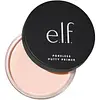What's inside
What's inside
 Key Ingredients
Key Ingredients

 Benefits
Benefits

 Concerns
Concerns

 Ingredients Side-by-side
Ingredients Side-by-side

Water
Skin ConditioningDipropylene Glycol
HumectantSodium Acrylates Crosspolymer-2
AbsorbentGlycerin
HumectantBambusa Arundinacea Stem Powder
AbrasiveCellulose
Absorbent1,2-Hexanediol
Skin ConditioningRosa Centifolia Flower Water
Skin ConditioningButylene Glycol
HumectantPEG-40 Hydrogenated Castor Oil
EmulsifyingSodium PCA
HumectantVp/Methacrylamide/Vinyl Imidazole Copolymer
Alcohol Denat.
AntimicrobialCarbomer
Emulsion StabilisingSodium Hydroxide
BufferingCaprylyl Glycol
EmollientSalicylic Acid
MaskingButeth-3
SolventSodium Hyaluronate
HumectantSodium Benzotriazolyl Butylphenol Sulfonate
UV AbsorberEnantia Chlorantha Bark Extract
Skin ConditioningEthylhexylglycerin
Skin ConditioningParfum
MaskingCitric Acid
BufferingTributyl Citrate
SolventSodium Benzoate
MaskingLimonene
PerfumingPotassium Sorbate
PreservativeLinalool
PerfumingOleanolic Acid
Skin ConditioningWater, Dipropylene Glycol, Sodium Acrylates Crosspolymer-2, Glycerin, Bambusa Arundinacea Stem Powder, Cellulose, 1,2-Hexanediol, Rosa Centifolia Flower Water, Butylene Glycol, PEG-40 Hydrogenated Castor Oil, Sodium PCA, Vp/Methacrylamide/Vinyl Imidazole Copolymer, Alcohol Denat., Carbomer, Sodium Hydroxide, Caprylyl Glycol, Salicylic Acid, Buteth-3, Sodium Hyaluronate, Sodium Benzotriazolyl Butylphenol Sulfonate, Enantia Chlorantha Bark Extract, Ethylhexylglycerin, Parfum, Citric Acid, Tributyl Citrate, Sodium Benzoate, Limonene, Potassium Sorbate, Linalool, Oleanolic Acid
Water
Skin ConditioningCyclopentasiloxane
EmollientCeresin
Emulsion StabilisingDimethicone
EmollientGlycerin
HumectantHydrogenated Polyisobutene
EmollientHdi/Trimethylol Hexyllactone Crosspolymer
Polymethylsilsesquioxane
Trimethylsiloxysilicate
EmollientPropylene Glycol
HumectantLauryl PEG-10 Tris(Trimethylsiloxy)Silylethyl Dimethicone
EmulsifyingSodium Chloride
MaskingCamellia Sinensis Leaf Extract
AntimicrobialSqualane
EmollientOryza Sativa Bran Wax
Skin ConditioningDimethicone/PEG-10/15 Crosspolymer
Dimethicone Crosspolymer
Emulsion StabilisingSilica
AbrasiveTriethoxycaprylylsilane
Talc
AbrasiveButylene Glycol
HumectantDisodium EDTA
Caprylyl Glycol
EmollientEthylhexylglycerin
Skin ConditioningPhenoxyethanol
PreservativeCI 77891
Cosmetic ColorantIron Oxides
Water, Cyclopentasiloxane, Ceresin, Dimethicone, Glycerin, Hydrogenated Polyisobutene, Hdi/Trimethylol Hexyllactone Crosspolymer, Polymethylsilsesquioxane, Trimethylsiloxysilicate, Propylene Glycol, Lauryl PEG-10 Tris(Trimethylsiloxy)Silylethyl Dimethicone, Sodium Chloride, Camellia Sinensis Leaf Extract, Squalane, Oryza Sativa Bran Wax, Dimethicone/PEG-10/15 Crosspolymer, Dimethicone Crosspolymer, Silica, Triethoxycaprylylsilane, Talc, Butylene Glycol, Disodium EDTA, Caprylyl Glycol, Ethylhexylglycerin, Phenoxyethanol, CI 77891, Iron Oxides
 Reviews
Reviews

Ingredients Explained
These ingredients are found in both products.
Ingredients higher up in an ingredient list are typically present in a larger amount.
Butylene Glycol (or BG) is used within cosmetic products for a few different reasons:
Overall, Butylene Glycol is a safe and well-rounded ingredient that works well with other ingredients.
Though this ingredient works well with most skin types, some people with sensitive skin may experience a reaction such as allergic rashes, closed comedones, or itchiness.
Learn more about Butylene GlycolCaprylyl Glycol is a humectant and emollient, meaning it attracts and preserves moisture.
It is a common ingredient in many products, especially those designed to hydrate skin. The primary benefits are retaining moisture, skin softening, and promoting a healthy skin barrier.
Though Caprylyl Glycol is an alcohol derived from fatty acids, it is not the kind that can dry out skin.
This ingredient is also used as a preservative to extend the life of products. It has slight antimicrobial properties.
Learn more about Caprylyl GlycolEthylhexylglycerin (we can't pronounce this either) is commonly used as a preservative and skin softener. It is derived from glyceryl.
You might see Ethylhexylglycerin often paired with other preservatives such as phenoxyethanol. Ethylhexylglycerin has been found to increase the effectiveness of these other preservatives.
Glycerin is already naturally found in your skin. It helps moisturize and protect your skin.
A study from 2016 found glycerin to be more effective as a humectant than AHAs and hyaluronic acid.
As a humectant, it helps the skin stay hydrated by pulling moisture to your skin. The low molecular weight of glycerin allows it to pull moisture into the deeper layers of your skin.
Hydrated skin improves your skin barrier; Your skin barrier helps protect against irritants and bacteria.
Glycerin has also been found to have antimicrobial and antiviral properties. Due to these properties, glycerin is often used in wound and burn treatments.
In cosmetics, glycerin is usually derived from plants such as soybean or palm. However, it can also be sourced from animals, such as tallow or animal fat.
This ingredient is organic, colorless, odorless, and non-toxic.
Glycerin is the name for this ingredient in American English. British English uses Glycerol/Glycerine.
Learn more about GlycerinWater. It's the most common cosmetic ingredient of all. You'll usually see it at the top of ingredient lists, meaning that it makes up the largest part of the product.
So why is it so popular? Water most often acts as a solvent - this means that it helps dissolve other ingredients into the formulation.
You'll also recognize water as that liquid we all need to stay alive. If you see this, drink a glass of water. Stay hydrated!
Learn more about Water